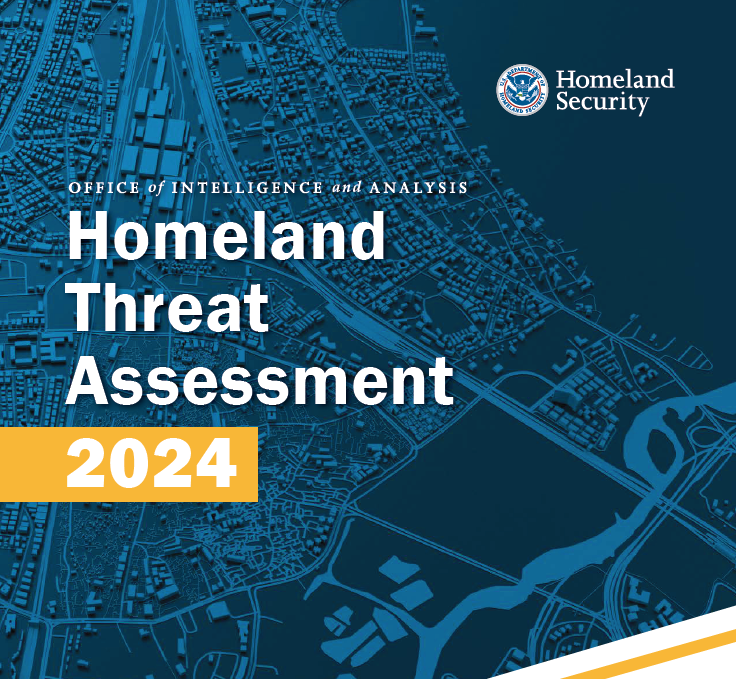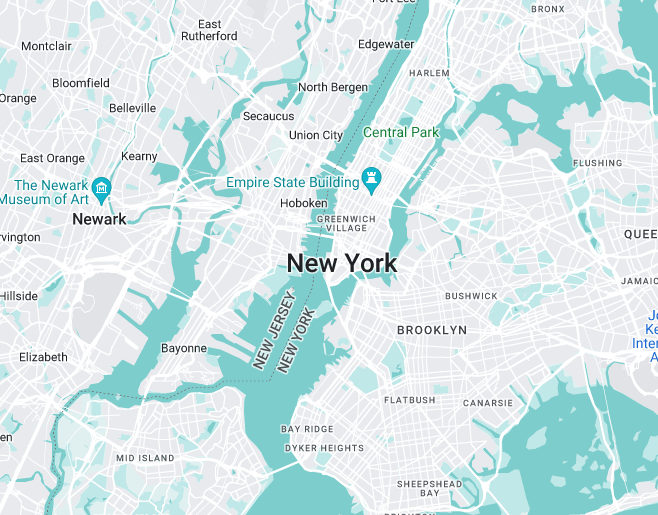Texas Responds to Biden Administration’s Allegations over Border Park
I recently discussed a border spat playing out at the Supreme Court, which pits the Biden administration against the state of Texas over concertina-wire (c-wire) fences placed along 29 miles of the Rio Grande in Maverick County, Texas. The latest flashpoint is the state’s seizure of Shelby Park in the town of Eagle Pass, seat of Maverick County, which purportedly has impeded Border Patrol’s activities there. Or did it? The one thing I know is that the justices hate such fact-driven, “she said/he said” arguments.
The Border Folderol in Maverick County. In March 2021, Texas Gov. Greg Abbott (R) launched “Operation Lone Star”, a state effort to supplement CBP’s border-security efforts. As originally implemented, state troopers and state National Guard troops were sent to the Southwest border to assist overwhelmed Border Patrol agents in catching illegal migrants and stopping drugs and other contraband from entering the country.
That operation has cost the state billions, and Abbott blames the administration for having to incur those costs and take such extraordinary steps. As the governor explained when he launched Lone Star:
The crisis at our southern border continues to escalate because of Biden Administration policies that refuse to secure the border and invite illegal immigration. … Texas supports legal immigration but will not be an accomplice to the open border policies that cause, rather than prevent, a humanitarian crisis in our state and endanger the lives of Texans. We will surge the resources and law enforcement personnel needed to confront this crisis.
The operation expanded in the weeks before Title 42 ended on May 11 of last year, as troops and troopers began placing c-wire barriers along the Rio Grande to deter an anticipated wave of migrants. To the degree that agents had an opinion, they appreciated the state’s assistance — except for in the 29 miles of the border in Maverick County.
Beginning in September, for reasons still unclear despite the intensive litigation that has followed, agents began cutting and removing sections of the c-wire barrier there. That prompted the state of Texas to go to federal district court to stop the destruction of its property.
The U.S. district court judge hearing the matter first paused CBP’s actions in October, but later denied the state’s request for a preliminary injunction, finding that the federal government had not waived its “sovereign immunity” from being sued for the common-law torts claims Texas asserted.
The state then appealed to the Fifth Circuit, which granted Texas a temporary administrative stay that stopped CBP from disturbing the state’s c-wire barrier, except for migrant- and officer-safety reasons.
The circuit court followed up on that stay on December 19, when it issued an injunction pending appeal that barred CBP from “damaging, destroying, or otherwise interfering with Texas’s c-wire fence in the vicinity of Eagle Pass” — with, again, an exception for emergencies.
Prelogar Goes to the Supreme Court. That brings me to the “she” in this dust-up, Elizabeth Prelogar, who as solicitor general of the United States serves as DOJ’s top courtroom lawyer.
On January 2, Prelogar filed a 42-page application with Justice Alito (the circuit justice for the Fifth Circuit), in the case, now captioned DHS v. Texas, asking the Supreme Court to vacate the Fifth Circuit’s injunction. On January 9, Texas Attorney General (AG) Ken Paxton — the “he” in this instance — sent the justices a 35-page response, defending his state’s claims and the Fifth Circuit’s injunction.
She Said. The case took an unexpected turn the day after Paxton filed his response, when the state seized control over Shelby Park, a municipal facility directly adjacent to the Rio Grande in Eagle Pass proper.
That sent Prelogar back to the High Court on January 12, where she filed a “Supplemental Memorandum Regarding Emergency Application to Vacate the Appeal” in Texas.
That memorandum painted a picture of state obstinance bordering on rebellion, with the Texas National Guard installing gates around the park and armed personnel blocking “Border Patrol’s normal access to the border through entry points”.
Most significantly — for reasons I’ll discuss below — Prelogar contended that Border Patrol was denied use of the boat ramp in the park and further argued that:
prior to the evening of January 10, Border Patrol agents were able to drive trucks with mounted surveillance equipment to various locations in this area. Those trucks were used to maintain visibility and awareness of activity along this stretch of the river and border. But the Texas National Guard has now blocked Border Patrol’s access to the area, rendering its agents unable to place mobile surveillance trucks. Border Patrol’s ability to view this portion of the border is now limited to a narrow sliver from a single surveillance camera located outside of the newly fenced area. [Internal citations omitted.]
He Said. Paxton filed his response the next day, and the AG tells a very different story about what’s going on in and around Shelby Park.
He contends that Texas has blocked off access to the river near the park with shipping containers and wire barriers “for years” (emphasis in original) to prevent migrants from dumping garbage and waste there and detracting from the recreational use of the area, and:
As a result, there has long been no line of sight for someone standing on the ground wishing to observe the river, except through very narrow apertures. Observation up and down the river has instead been provided by cameras on “scope trucks” placed on strategic areas of high ground with a view of the river. Texas relies in part on Border Patrol to tell it what Border Patrol needs in terms of surveillance because they have no access to Border Patrol’s cameras.
…
When the Park was closed, Texas National Guard officers suggested alternative locations for Border Patrol to set up their mobile surveillance equipment, one of which was a mere 400 feet further downriver and was described as “better” for the purpose of reconnaissance because of its higher elevation. Access to both sides of the fence was never impeded because there are a number of other boat ramps in the vicinity unaffected by Texas’s use of Shelby Park. Indeed, Border Patrol boats were seen in the water just yesterday after Texas secured the area. It appears that Border Patrol chose to voluntarily remove boats only after filing notice with the court. [Emphasis added; internal citations omitted.]
In any event, Paxton further asserts that the state is working to ensure Border Patrol has access to the Shelby Park boat ramp “for the reasons cited by the Solicitor General in her brief — namely, surveillance, patrol, and humanitarian rescue”, and he offered the state’s assistance in improving agents’ access to other nearby ramps.
Finally, Paxton admits that Border Patrol had used Shelby Park in the past as a “staging area” for apprehended migrants, but he asserts that they stopped doing so in November. In fact, he claims, Border Patrol “even informed the Texas Department of Public Safety’s Regional Director … that federal officials would not be present to monitor or administer aid unless Texas called them”.
Blame for the Drowning of Three Migrants. Therefore, the AG argues: “Despite claiming that the medical carveout in the Fifth Circuit’s injunction is not broad enough … [d]efendants’ actual behavior in withdrawing from the Eagle Pass area shows they had little interest ‘being in a position to respond to emergencies’”.
That latter contention has taken on saliency of late given DHS’s claims that a migrant mother and her two children drowned on January 12, “after Texas officials ‘physically barred’ Border Patrol agents from entering Shelby Park”.
The Texas Department of Military Affairs (TMD) has termed those claims “wholly inaccurate”, contending instead that: “At the time that Border Patrol requested access, the drownings had occurred, Mexican authorities were recovering the bodies, and Border Patrol expressed these facts to the TMD personnel on site”.
None of this has curbed either party’s rhetoric in this matter, with Abbott tweeting out his own denials of state liability in those migrants’ deaths and his apportionment of blame on January 14:
Turns out @RepCuellar (& some media) were so eager to point finger at Texas for drowning of migrants they forgot to get the facts.
When BP requested access to river the drownings had already occurred & found in MX.
The fact is the deaths are b/c of Biden’s Open Border magnet.
— Greg Abbott (@GregAbbott_TX) January 15, 2024
Normally, factual issues like these are sorted out before a case makes it to the Supreme Court. Why the administration decided to foist this case on the justices at this stage is as unclear as why CBP concluded it had to cut the c-wire in Maverick County to begin with. If I were Justice Alito, faced with a record like this, I’d send Prelogar and Paxton down to Eagle Pass to sort it out, but unfortunately, he probably doesn’t have that option.






